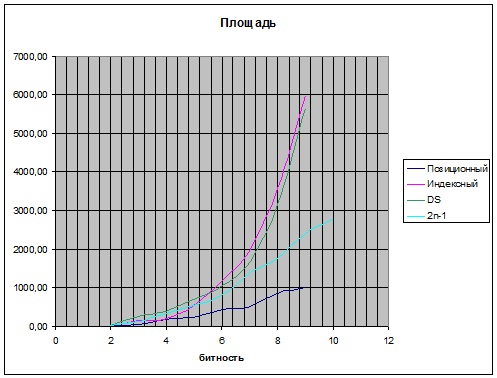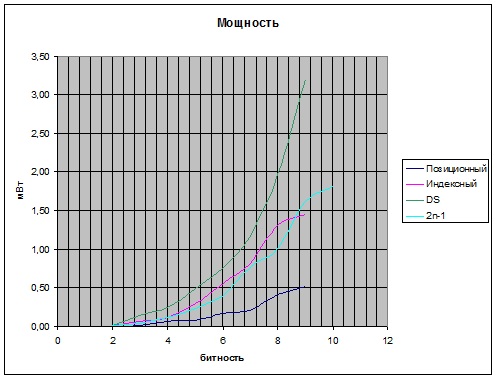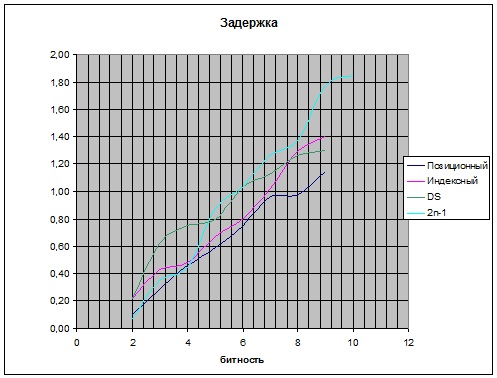Сравнение разных методов умножения по модулю - 2^n-1,индексный,по методу разности квадратов и позиционный. — различия между версиями
Материал из Модулярная арифметики
Turbo (обсуждение | вклад) |
|||
| Строка 4: | Строка 4: | ||
== Типовой Verilog-модуль == | == Типовой Verilog-модуль == | ||
| + | Для n = 3 | ||
<pre> | <pre> | ||
module mod_multiplier_7 (a,b,out); | module mod_multiplier_7 (a,b,out); | ||
| Строка 85: | Строка 86: | ||
</pre> | </pre> | ||
| − | == Генератор Verilog-модулей == | + | == Генератор Verilog-модулей на языке TCL/TK == |
<pre> | <pre> | ||
for { set n 2} {$n < 11} {incr n} { | for { set n 2} {$n < 11} {incr n} { | ||
| Строка 268: | Строка 269: | ||
[[Изображение:2n-1_power.jpg]] | [[Изображение:2n-1_power.jpg]] | ||
[[Изображение:2n-1_timing.jpg]] | [[Изображение:2n-1_timing.jpg]] | ||
| + | |||
| + | * [http://vscripts.ru/res/files/2^n-1-mul-results.zip Excel файл с табличками] | ||
[[Категория:Результаты]] | [[Категория:Результаты]] | ||
Текущая версия на 14:23, 25 февраля 2013
На основе прошлого исследования было добавлено сравнение результатов с умножителем по модулю вида 2n-1. Сравнение производилось для модулей с разрядностью от 2 до 9 бит. Запуск производился на Synopsys Design Compiler.
Содержание
Типовой Verilog-модуль
Для n = 3
module mod_multiplier_7 (a,b,out); output wire [2:0] out; input wire [2:0] a,b; wire [2:0] p_out0; wire [2:0] p_out1; wire [2:0] p_out2; reg [3:0] res0; reg [3:0] res1; assign p_out0[0] = a[0] && b[0]; assign p_out0[1] = a[1] && b[0]; assign p_out0[2] = a[2] && b[0]; assign p_out1[0] = a[2] && b[1]; assign p_out1[1] = a[0] && b[1]; assign p_out1[2] = a[1] && b[1]; assign p_out2[0] = a[1] && b[2]; assign p_out2[1] = a[2] && b[2]; assign p_out2[2] = a[0] && b[2]; always @ (*) begin res0=p_out0+p_out1; if(res0[3]==1) begin res0[3]=0; res0=res0+1; end res1=res0+p_out2; if(res1[3]==1) begin res1[3]=0; res1=res1+1; end if(res1==7) res1=res1+1; end assign out = res1[2:0]; endmodule
Testbench
module atest_bench();
reg [2:0] inp1,inp2;
wire [2:0] out;
integer fori,forj,i,l;
reg dummy;
mod_multiplier_7 m1(inp1,inp2,out);
initial
begin
begin
for (fori=1; fori < 7; fori = fori + 1)
for (forj=1; forj < 7; forj = forj+1)
begin
inp1=fori;
inp2=forj;
#1 dummy = 1;
i=(fori * forj)%7;
//$display ("a=(%d) b=(%d) Res=(%d) expect=(%d)",fori,forj,out,i);
l = out;
if (l != i)
begin
$display ("Error i=(%d) l=(%d)",i,l);
end
#1 dummy = 1;
end
end
end
endmodule
Генератор Verilog-модулей на языке TCL/TK
for { set n 2} {$n < 11} {incr n} {
set q [expr round(pow(2,$n)-1)]
set b [expr $n-1]
set file1 "mod_multiplier_$q.v"
set out1 [open $file1 "w"]
puts $out1 "module mod_multiplier_$q (a,b,out);
output wire \[$b:0\] out;
input wire \[$b:0\] a,b;"
for {set pt 0} {$pt < $n} {incr pt} {
puts $out1 "wire \[$b:0\] p_out$pt;"
}
for {set r 0} {$r < $b} {incr r} {
puts $out1 "reg \[$n:0\] res$r;"
}
for {set i 0} {$i < $n} {incr i} {
puts $out1 "
"
for {set j 0} {$j < $n} {incr j} {
set k [expr ($j -$i + $n)%$n]
puts $out1 "assign p_out$i\[$j\] = a\[$k\] && b\[$i\];"
}
}
puts $out1 "
always @ (*)
begin"
for {set i 0} {$i < $n} {incr i} {
set arr($i) "p_out$i"
}
set arr_count $n
set z 0
while {1} {
set arr_count1 0
for {set i 0} {$i< [expr $arr_count-1]} {incr i 2} {
set p_internal "res$z"
set tmp1 [expr $i+1]
puts $out1 " $p_internal=$arr($i)+$arr($tmp1);"
set RES "res$z\[$n\]"
puts $out1 " if($RES==1)
begin
res$z\[$n\]=0;
res$z=res$z+1;
end"
set arr1($arr_count1) $p_internal
incr arr_count1
incr z
}
set copy [expr $arr_count%2]
if {$copy == 1} {
set count2 [expr $arr_count-1]
set arr1($arr_count1) $arr($count2)
incr arr_count1
}
if {$arr_count1 <= 1} {
break;
}
# copy
for {set i 0} {$i < $arr_count1} {incr i} {
set arr($i) $arr1($i)
set arr_count $arr_count1
}
}
set z [expr $z-1]
puts $out1 "if(res$z==$q)
res$z=res$z+1;"
puts $out1 "end
assign out = res$z\[$b:0\];
endmodule
"
puts $out1 "module atest_bench();
reg \[$b:0\] inp1,inp2;
wire \[$b:0\] out;"
puts $out1 " integer fori,forj,i,l;
reg dummy;
mod_multiplier_$q m1(inp1,inp2,out);
"
puts $out1 "initial
begin
begin
for (fori=1; fori < $q; fori = fori + 1)
for (forj=1; forj < $q; forj = forj+1)
begin
inp1=fori;
inp2=forj;"
puts $out1 " #1 dummy = 1;
i=(fori * forj)\%$q;
//\$display (\"a=(\%d) b=(\%d) Res=(\%d) expect=(\%d)\",fori,forj,out,i);
l = out;"
puts $out1 " if (l != i)
begin
\$display (\"Error i=(\%d) l=(\%d)\",i,l);
end
#1 dummy = 1;
end
end
end
endmodule"
}
close $out1
Библиотека стандартных ячеек
NangateOpenCellLibrary_typical_conditional_nldm.lib
Скрипт для запуска
analyze -f verilog <имя модуля>.v elaborate <имя модуля> uniquify current_design <имя модуля> check_design set_load [load_of [get_lib_pins NangateOpenCellLibrary/INV_X4/A]] [all_outputs] set_driving_cell -lib_cell DFFRS_X2 -library NangateOpenCellLibrary -pin Q [all_inputs] set_max_delay -to [all_outputs] 0 set_max_area 0 compile report_timing -significant_digits 6 > timing_<имя модуля>.rpt report_area > area_<имя модуля>.rpt report_power -analysis_effort high > power_<имя модуля>.rpt remove_design -all
Модули для эксперимента
| Битность | Модуль для индексного умножителя | Модуль для DS и 2n-1 умножителя |
| 2 | 3 | 3 |
| 3 | 7 | 7 |
| 4 | 13 | 15 |
| 5 | 31 | 31 |
| 6 | 61 | 63 |
| 7 | 127 | 127 |
| 8 | 251 | 255 |
| 9 | 509 | 511 |


